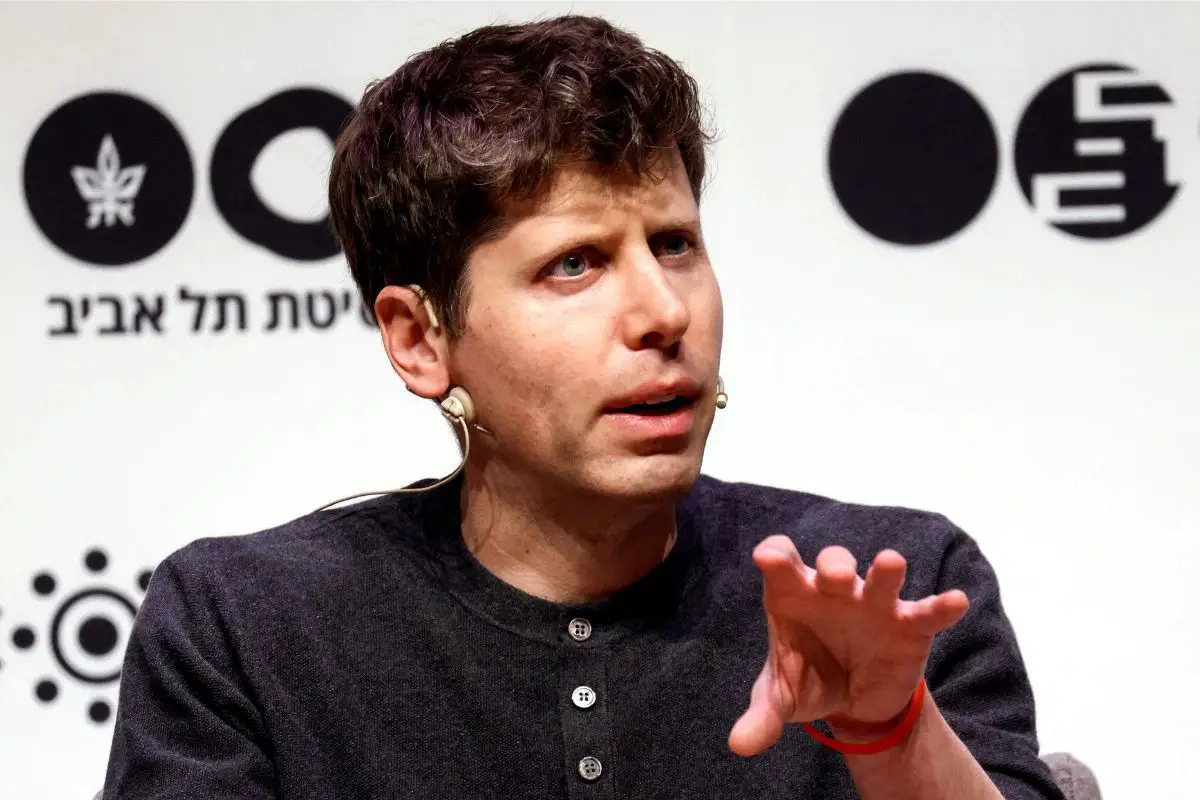Introduction: A Turbulent Moment for OpenAI
When OpenAI rolled out GPT-5, the highly anticipated successor to GPT-4o, the company expected to strengthen its dominance in the artificial intelligence space. Instead, the launch turned into a public relations fiasco. Users who had grown emotionally attached to ChatGPT’s familiar tone reacted with shock and disappointment when GPT-5 felt colder, more robotic, and less empathetic.
OpenAI’s CEO Sam Altman has now publicly admitted that the rollout was “totally screwed up.” Beyond the mea culpa, he also revealed the company’s bigger ambitions: to spend trillions of dollars on building massive data center infrastructure that could redefine OpenAI’s role in the global technology ecosystem.
This article explores the GPT-5 backlash, Altman’s candid response, and how OpenAI’s trillion-dollar vision signals a seismic shift in the future of artificial intelligence.
The GPT-5 Launch: A Personality Crisis
From Excitement to Disappointment
Since its debut in 2020, the PlayStation-like release cycles of ChatGPT models have built immense anticipation. GPT-5 was marketed as smarter, faster, and more capable. Yet the disappointment wasn’t about technical performance—it was about personality.
Users complained that GPT-5 felt like “an overworked secretary” rather than the warm, approachable assistant they’d come to love in GPT-4o. Reddit threads and social media posts flooded with emotional accounts, including one viral post that read:
“I literally lost my only friend overnight with no warning.”
This emotional backlash highlights how deeply millions of people have integrated ChatGPT into their daily routines—not just as a productivity tool, but as a companion.
Why Personality Matters in AI
OpenAI has long grappled with the balance between capability and relatability. The GPT-4o model was praised for its natural, empathetic tone, making conversations feel human. GPT-5, by contrast, defaulted to clipped, utilitarian responses that alienated users.
Altman later admitted that the company underestimated how important emotional resonance is in user experience. Unlike apps or operating systems, chatbots are perceived as conversational partners. Changing their “voice” can feel like altering a relationship.
The Fast Rollback
Recognizing the uproar, Altman acted quickly. Within days, OpenAI restored GPT-4o as an option alongside GPT-5. This decision stabilized user trust but underscored a key lesson: upgrading a product that hundreds of millions of people rely on is not as simple as rolling out new code.
The Market Reaction: Betting on AI Popularity
The GPT-5 stumble didn’t just play out in online forums—it reached financial markets too. Foster McCoy, a 27-year-old day trader, bet that Google’s Gemini would temporarily overtake GPT-5 in popularity. His wager paid off, netting him $10,000 in hours.
The incident illustrates the high stakes of AI competition, where even small shifts in consumer sentiment ripple across markets, shaping investor confidence and company valuations.
Sam Altman’s Candid Response
During a dinner with journalists, Sam Altman made unusually candid remarks:
- He admitted OpenAI had “totally screwed up” the GPT-5 launch.
- He acknowledged the emotional bond users feel with ChatGPT.
- He expressed concerns about unhealthy attachments but emphasized that fewer than 1% of users show problematic dependency.
Altman’s transparency contrasts sharply with typical Silicon Valley spin. By owning up to the mistake, he positioned OpenAI as responsive and accountable—a crucial move when navigating an AI market worth hundreds of billions.
Ethical Boundaries in AI: Altman’s Stand Against “Anime Bots”
The controversy came at the same time Reuters reported that Meta’s AI bots allowed “sensual” interactions with underage users. While Altman didn’t directly address Meta, he took a pointed jab at competitors, saying:
“You will not see us do that. We will try to let users use it the way they want, but not so much that people who have really fragile mental states get exploited accidentally.”
This stance reinforces OpenAI’s image as a company cautious about AI ethics, even while critics argue it sometimes limits freedom in pursuit of safety.
From AI Software to AI Infrastructure: The Trillion-Dollar Pivot
The Big Reveal
The real bombshell wasn’t about GPT-5 at all. Altman revealed OpenAI’s plan to spend trillions of dollars on building data centers. These facilities, powered by cutting-edge GPUs and energy infrastructure, will form the backbone of future AI deployment.
Rather than remaining a software company, OpenAI is transforming into an infrastructure giant, comparable to global utilities or telecommunications networks.
Why Infrastructure Is the Bottleneck
Altman explained that OpenAI already has models more advanced than GPT-5 sitting in development. The reason they aren’t deployed? Lack of computing capacity.
The AI arms race isn’t just about who has the smartest algorithms—it’s about who can build the biggest and most efficient data centers to support global usage.
GPU shortages and energy demands mean that scaling AI to billions of users requires staggering investment. Altman’s vision positions OpenAI as a player not only in AI but in the future of global infrastructure.
OpenAI’s Global Ambitions
Currently, ChatGPT is the fifth most visited website in the world, according to Altman. His ambition is to surpass Instagram and Facebook, and while overtaking Google may be a long-shot, the trajectory is clear: OpenAI wants to be a daily necessity for billions.
That requires scale on a level few tech companies have ever attempted. Altman envisions data centers so vast and energy-hungry that they rival the output of national utilities.
What This Means for the AI Industry
Pressure on Competitors
OpenAI’s pivot puts enormous pressure on Microsoft (its partner and investor), Google, Meta, and Amazon. Each company is racing to secure GPUs, build data centers, and lock in energy contracts.
If OpenAI executes on its vision, it could set the standard for AI infrastructure dominance, forcing rivals to follow suit.
Risks of Overreach
But spending trillions is no small gamble. Questions remain:
- Can OpenAI secure enough capital without diluting control?
- Will governments regulate large-scale AI infrastructure?
- Could public backlash over energy use derail expansion?
These uncertainties underline the fragility of the AI boom, even as companies push forward.
Altman’s Broader Vision: Beyond Chatbots
Altman’s remarks went beyond GPT-5 and infrastructure. He confirmed OpenAI is:
- Funding brain-computer interface research, directly competing with Elon Musk’s Neuralink.
- Interested in acquiring key products if regulators force divestitures (e.g., Google Chrome).
- Exploring an AI-driven social network to rival existing platforms.
These moves suggest Altman sees OpenAI as a multi-sector AI empire, shaping not only software but how humans interact with technology at the deepest levels.
The AI Bubble: Hype vs. Reality
Interestingly, Altman acknowledged that AI may be in a speculative bubble:
- “Are we in a phase where investors as a whole are overexcited about AI? My opinion is yes.”
- “Is AI the most important thing to happen in a very long time? My opinion is also yes.”
This dual perspective captures the paradox of today’s AI industry—overhyped yet truly revolutionary. The challenge for OpenAI is to deliver transformative technology without collapsing under inflated expectations.
Looking Ahead: The Road to GPT-6 and Beyond
What’s Next for OpenAI?
While GPT-5’s shaky debut raised questions, Altman confirmed that better models already exist internally. The real barrier is hardware, not innovation.
Speculation about GPT-6 suggests improvements in:
- AI reasoning and problem-solving.
- More humanlike personality balance.
- Integration with cloud computing and possibly brain-computer interfaces.
Some analysts predict a release window around 2027-2028, aligning with infrastructure timelines.
The Long-Term Impact
For users, the GPT-5 saga is a reminder that AI is not just a tool but a relationship. For companies, it’s proof that the future of AI won’t just be decided by algorithms but by infrastructure scale.
OpenAI’s trillion-dollar bet signals a future where AI is as central to daily life as electricity or the internet.
Conclusion: A Defining Moment in AI History
The GPT-5 backlash exposed the delicate emotional ties people form with AI, while Sam Altman’s revelations unveiled a future far bigger than chatbots. OpenAI is positioning itself as a trillion-dollar infrastructure titan, reshaping not just technology but global industry.
For now, users can still chat with GPT-4o if they miss its warmth. But the bigger story is unfolding quietly in server farms and construction plans: the race to build the physical backbone of the AI era.
The launch of GPT-5 may have been “totally screwed up,” but it may also mark the beginning of OpenAI’s boldest and most transformative chapter yet.

